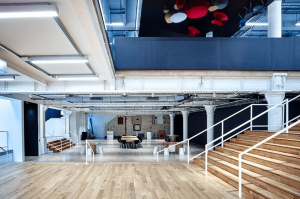There are a number of ways to make buildings greener and reduce their carbon footprint. This is true whether it is a private home or large pieces of commercial architecture. Most people know to look at the building materials they use and choose more sustainable ones. The goal here should be to reduce the embodied carbon in the building. However, you need to go further than this. It is also important to look at the operational carbon and make the property as efficient as possible.
What is it?
The operational carbon is any emissions that occur over the course of the life cycle of the building. There are some key things to think about here, including energy use and maintenance. Ideally you should aim to create a property that does not produce a huge amount of carbon as it operates.
Energy efficiency
 One of the best ways to reduce the operational carbon of any property is to make it as efficient as possible. You should look at this in terms of heating, cooling, ventilation, lighting, and infrastructure. The goal should be to achieve low energy use wherever possible. If you can do that, the building will consume less energy for daily operations. You can get really big improvements with commercial architecture.
One of the best ways to reduce the operational carbon of any property is to make it as efficient as possible. You should look at this in terms of heating, cooling, ventilation, lighting, and infrastructure. The goal should be to achieve low energy use wherever possible. If you can do that, the building will consume less energy for daily operations. You can get really big improvements with commercial architecture.
There are lots of things you can do here. For example you can have automatic lighting controls that ensure you are not wasting energy to illuminate parts of a property that people are not using. In addition you can look at smart heating and ensure your design will allow the property to benefit from natural heating, cooling, and ventilation.
Renewables
The improvements in renewable energy technology in the last few decades have been amazing. Now you can choose a huge array of different solutions that can help you to generate clean, sustainable electricity on various sites. For example you can use solar panels and wind farms. With the right systems and designs you could produce all the energy your property needs or even generate a surplus.
There is also more choice with renewable heating systems. Ground and air source heat pumps are a big topic at the moment. The technology can allow you to replace fossil fuel burning boilers with systems that take air from the earth or air. They can have a much smaller carbon footprint. You will need a really good design here though if you are dealing with large commercial architecture.
Build with operational carbon in mind
Sadly even the most efficient properties will have some level of operational carbon. However, you can design the structures with this in mind and work to offset it. For example, you can use wood or modern composites like CLT. They can reduce the embodied carbon to such an extent that it can cover for the emissions from daily use.
Another thing you can do here is design the building so it is adaptable. Let’s assume you have an open plan office that is 10,000sq feet. You may not need it to be entirely open all of the time. What you can do here is use flexible timber screens or retractable partitions. You can then ensure you only need to have lights, heating, and air con in the part of the space you are using at each moment.
Speak to us about green commercial architecture
Coffey Architects knows that every property has a responsibility to protect the environment and reduce carbon emissions. We can help with this by creating the most thoughtful designs. They could be for brand new buildings or reinvigorating old ones. The latter can be tricky but with the right design you can retrofit many structures and make them greener.
So, if you are thinking about a proposal, talk to us about commercial architecture. We can work with you to create designs that will have the lowest possible levels of embodied and operational carbon.